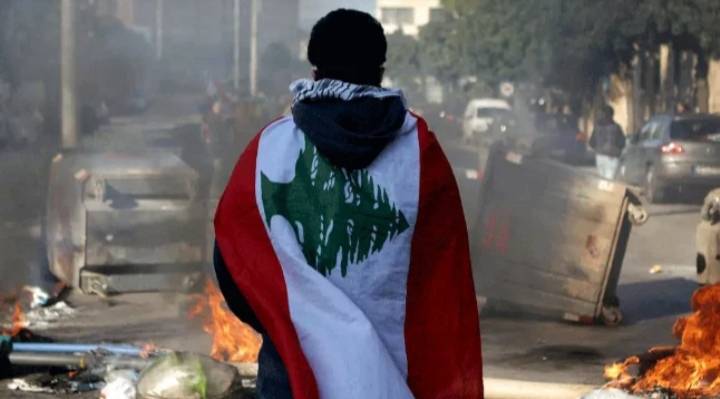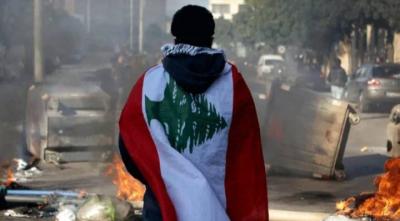The international negotiations at the Paris meeting regarding the Lebanese issue will not be easy or straightforward. Each country has its own stance and vision, which may conflict with others in some areas while aligning in others. In Lebanon, the current political movement faces many obstacles as well, amid conflicting interests and viewpoints. However, the meeting remains a pivotal moment, as there are only two options afterwards: either achieving a settlement within a few months, or facing a major crash with consequences that exceed a complete financial collapse, leading to security and livelihood breakdowns that would increase calls for division and federalism.
**Common Ground**
While the meeting is not at the level of leadership among these countries, it carries multiple indicators to encourage the Lebanese to engage in a settlement and reflects some external interest. These countries will not make decisions alone, as there will also be communication with Tehran regarding external aspects. On the internal front, there is a necessity for movement amongst conflicting forces to prepare the ground and set the atmosphere. If the Lebanese respond positively to these efforts, the settlement may succeed. However, if there is no response and the stalemate continues, most of these countries will wash their hands of Lebanon, which could face dire outcomes. Any solution must revert to the principles outlined in the political statement that will emerge from the meeting or that the participants agree upon.
Lebanese agreement on the provisions of this meeting may not come swiftly, necessitating considerable time to seek both external and internal parties to reach common ground, especially as the primary discussion will center on electing a president and choosing a prime minister. If the Lebanese response is not quick, it means that some forces will await a change in the balance of power to shape the settlement, which prolongs the vacuum and crisis while leaving doors open to dangerous possibilities.
**Approaches of Different Countries**
During the preparations for the meeting, there was a noticeable lack of complete harmony in viewpoints and approaches, as each country has its own perspective. Despite ongoing French-Saudi coordination, differences remain in some approaches, such as the efforts of the French to endorse or propose names, which Saudi Arabia has rejected. The same applies to the personality of the prime minister. Each party attempted to impose its viewpoint in the political paper under discussion. A considerable effort was needed to reach common points, while there still remain outstanding issues that need to be addressed during the meeting. Part of these approaches and points had already been prepared during the visit of the French Foreign Minister to Saudi Arabia, which confirmed her country's intention to reach an agreement with Saudi Arabia.
**Learning from the Doha Agreement**
However, returning to the main title, if there is consensus at the meeting on a common political vision that the Lebanese embrace, one can talk about a positive path toward a settlement. If that is not achieved either internally or externally, the chances favor further collapses, along with the region and international community distancing themselves. Thus, the Lebanese are monitoring the course of the meeting and awaiting outcomes. They are trying to envision what the next settlement will look like, recalling the path of the Doha Agreement, which was preceded by a military "victory" for Hezbollah on the ground in exchange for a settlement in which the party retained the blocking third. However, a consensus was reached on electing a compromise president—then Army Commander Michel Sleiman—and appointing a prime minister aligned with the March 14 forces. This settlement lasted throughout Prime Minister Siniora's second government until the parliamentary elections in 2009. Following the elections and the formation of Hariri's government, which included a "royal" minister, and amidst regional changes, that formula was overturned, sending Lebanon into a new orbit, leading to the current situation. This specifically requires treatment or securing guarantees against overturning any settlement formula, or fortifying it with political, economic, and financial foundations that are resistant to reversal.
**The Required Profile for the President**
In anticipation of the meeting, political activity intensified internally. Among the most notable actions was the visit of the Saudi ambassador to the Army Commander. Theoretically, this visit implicitly indicates Saudi approval of Joseph Aoun, although the Saudi stance remains clear in not officially endorsing any name. Conversely, other data suggest that the visit was exploratory, aiming to send a signal that the desired president resembles the profile of Joseph Aoun. This means someone capable of communication with both internal and external parties, without politically favoring one side over another. This applies to the Army Commander as well as to others. It is notable that some recall the experience of 2008, where conditions were prepared for the election of then-Army Commander Michel Sleiman.
Hezbollah and Amal's quick response to this—according to available data—has been a steadfast position towards Sleiman Frangieh, leaking messages that they have not yet given any approval for the Army Commander’s election. They reject any discussion regarding the possibility of abandoning Frangieh's candidacy. Here, positions clash, with some considering that Hezbollah might wait for an extended period until conditions favor Frangieh reaching the presidency, while others indicate that matters require more time to cultivate conditions for a satisfactory settlement for all parties, leading Hezbollah and Frangieh to consider moving to a "Plan B."
In all cases, what lies beyond the Paris meeting appears to be a unique opportunity, perhaps the last, teetering between settlement or dire evil.




